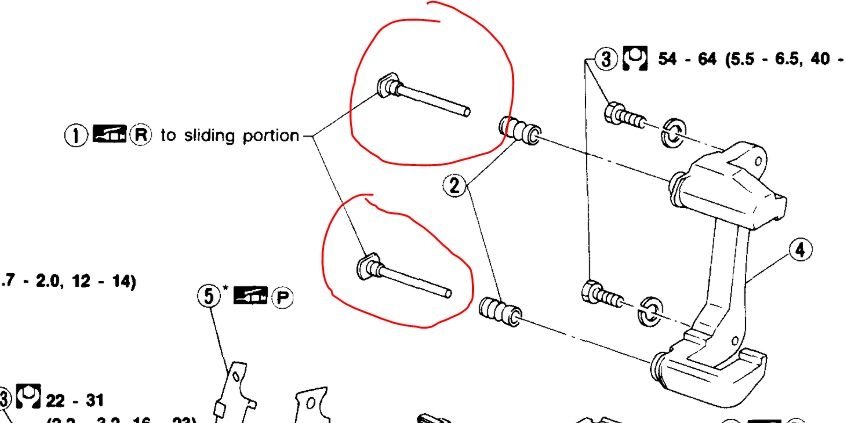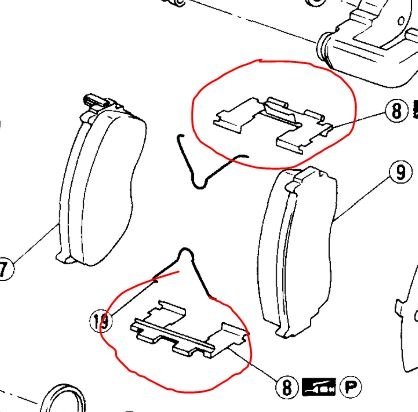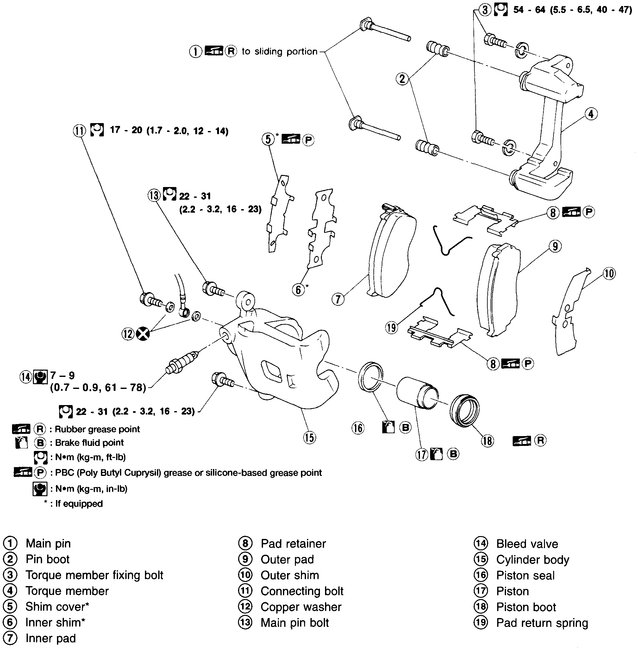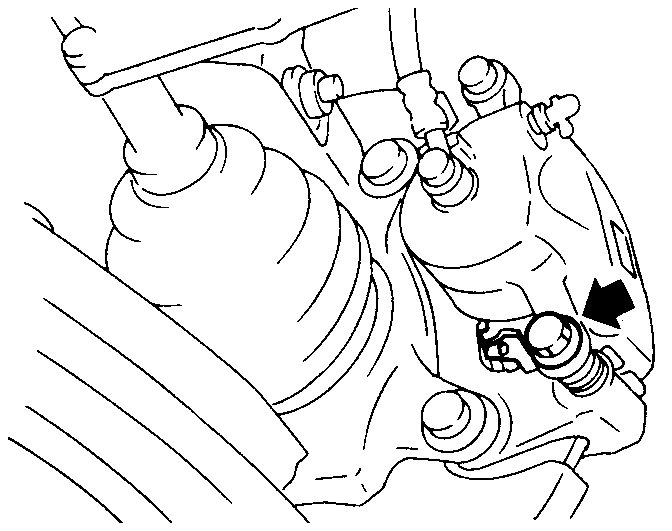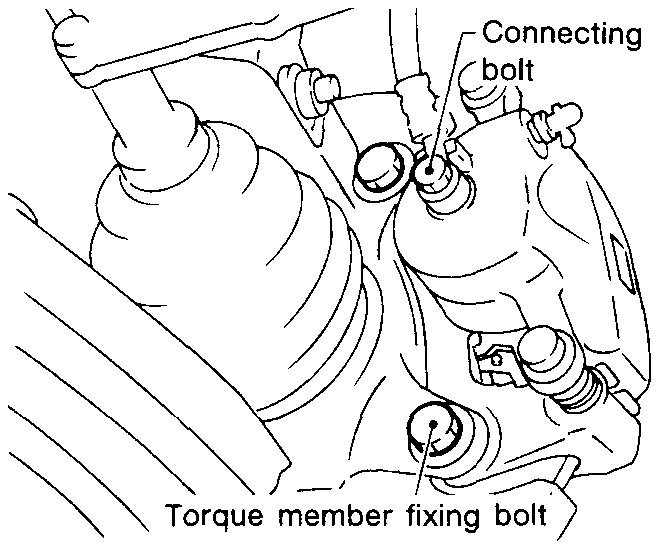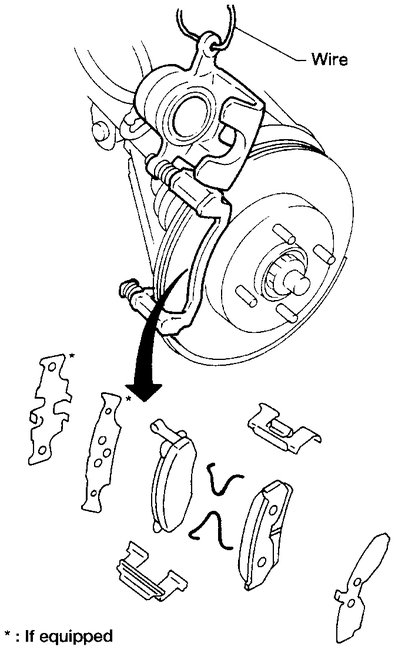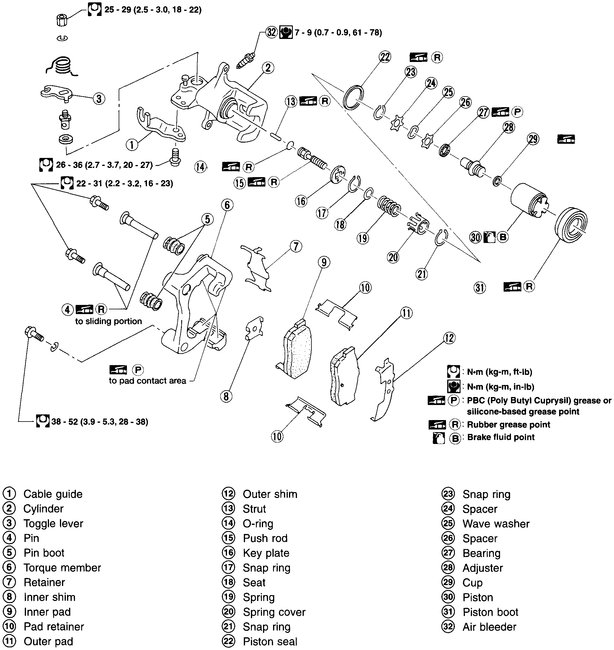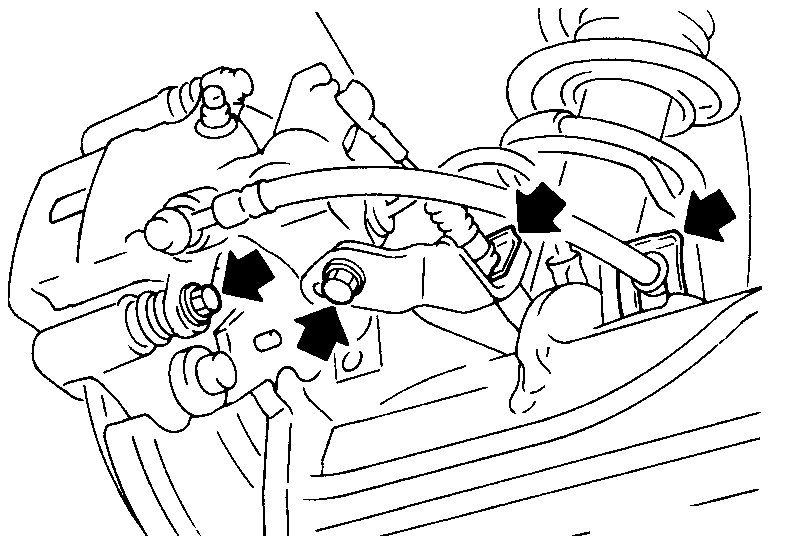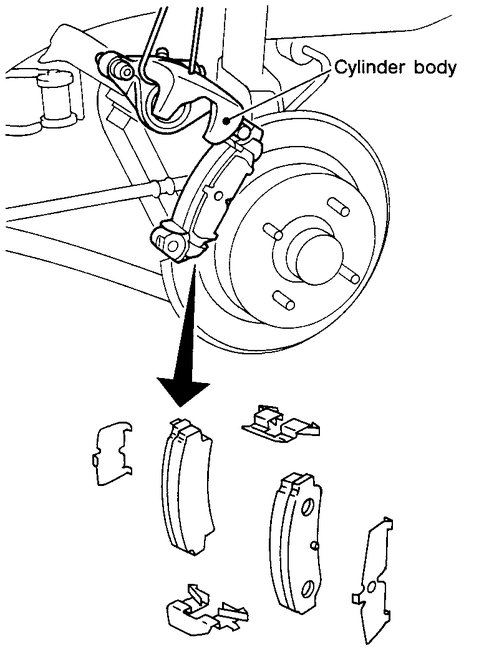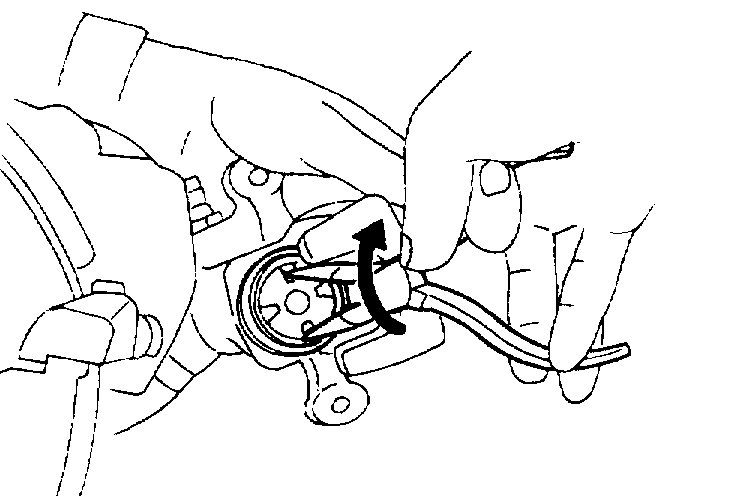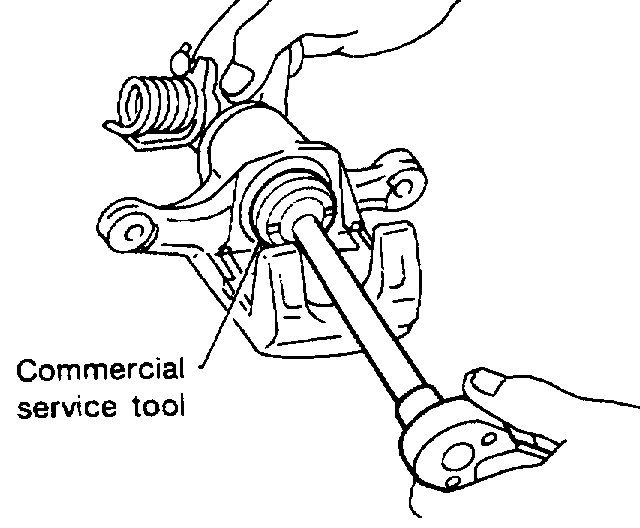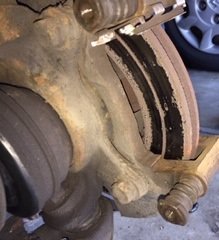Welcome back:
Okay, if the pedal isn't going to the floor, then it isn't the master cylinder. Even though the brake pads are that old doesn't make them go bad. Of course, you would need to remove them and check for cracks or anything out of the ordinary. Next, the rust you described is totally normal. That isn't an issue. If you replaced the rotors today, they would rust in the same places in very little time.
What I suspect may be happening is the hardware related to the calipers may be sticking or hanging up. There are slide pins on the calipers so pressure is applied to both the inner and outer pads at the same time. If they are getting tight, and that is very possible considering the amount of time they have been installed, it makes it more likely that one of the pads is doing more work than the other and taking longer to stop the vehicle. Usually in this case, one pad will be worn thinner than the other.
I attached a few pics. In the first pic, I circled the slid pins. They should be easy to move in and out. If they are not, remove them, clean both the pins and where they mount, and then using brake component grease, grease them, making sure they slide easily.
Next, there is hardware where the pad mounts to the caliper mount. The hardware is aluminum and it is attached to a steel caliper. What happens very often is the steel caliper mount will rust. When that happens, it swells against the aluminum causing the aluminum hardware to tighten against the pad and not allow it to move. If you look at picture 2, it shows the aluminum hardware components I am referring to. Make sure the brake pads can move in the mounts.
The next concern is a possible caliper piston is sticking. To check that, you will need to remove the caliper and try to depress the piston to see if it moves freely.
______________________________________________________________________-
Now, if you want to do it yourself, here are the directions. The remaining pictures will correlate with the directions.
___________________________
Front
1997 Nissan-Datsun Sentra L4-1597cc 1.6L DOHC MFI (GA16DE)
Front
Vehicle Brakes and Traction Control Disc Brake System Brake Pad Service and Repair Procedures Front
FRONT
Exploded View Of Front Brake Assembly
imageOpen In New TabZoom/Print
CAUTION:
When cylinder body is open, do not depress brake pedal or piston will pop out.
Be careful not to damage piston boot or get oil on rotor.
Always replace shims when replacing pads.
If shims are rusted or show peeling of the rubber coating, replace them with new shims.
REMOVAL
WARNING: Clean brake pads with a vacuum dust collector to minimize the hazard of airborne particles or other materials.
1. Remove master cylinder reservoir cap.
Caliper Lower Pin Bolt
Pic 3
Torque Member And Fixing Bolt Removal
Pic 4
2. Remove lower pin bolt. It is not necessary to remove connecting bolt except for disassembly or replacement of caliper assembly.
3. Rotate caliper body upward and suspend caliper assembly with wire so as not to stretch brake hose.
Pad Assembly
Pic 5
4. Then remove pad retainers, return spring and inner shim and cover (if equipped) and outer shim.
5. Standard pad thickness is 11.0 mm (0.44 inches)
6. Pad wear limit is 2.0 mm (0.079 inches)
Carefully monitor brake fluid level because brake fluid will return to reservoir when pushing back piston.
INSTALLATION
1. Reverse procedure to install caliper assembly.
2. Install and secure all bolts.
_____________________________
Rear brakes.
1997 Nissan-Datsun Sentra L4-1597cc 1.6L DOHC MFI (GA16DE)
Rear
Vehicle Brakes and Traction Control Disc Brake System Brake Pad Service and Repair Procedures Rear
REAR
WARNING: Clean brake pads with a vacuum dust collector to minimize the hazard of airborne particles or other materials.
CAUTION:
When cylinder body is open, do not depress brake pedal, or piston will pop out.
Be careful not to damage piston boot or get oil on rotor.
Always replace shims when replacing pads.
If shims are rusted or show peeling of rubber coating, replace them with new shims.
Exploded View Of Rear Disc Brake Assembly
pic 7
1. Remove master cylinder reservoir cap.
Rear Disc Fasteners
pic 8
2. Remove brake cable lock spring.
3. Disconnect cable guide from caliper assembly and remove cable.
4. Remove lock spring from brake hose, then brake hose from bracket
5. Remove lower pin bolt.
It is not necessary to remove connecting bolt except for disassembly or replacement of caliper assembly. In this case, suspend cylinder body with wire so as not to stretch brake hose.
6. Rotate caliper body upward.
Rear Disc Pad Assembly
pic 9
7. Remove pad retainers, and inner and outer shims. Measure thickness of brake lining material:
Standard pad thickness is 10 mm (0.39 inches)
Pad wear limit is 1.5 mm (0.059 inches)
pic 10
pic 11
8. When installing new pads, push piston into cylinder body by turning piston "clockwise."
Carefully monitor brake fluid level because brake fluid will return to reservoir when pushing back piston.
9. Reverse procedure to install.
______________________________________________
Here are links that explain how to replace both brake pads and rotors. These links show it in general, but most people find it helpful when combining the links and the directions which are specific to the vehicle.
https://www.2carpros.com/articles/how-to-replace-front-brake-pads-and-rotors-fwd
https://www.2carpros.com/articles/how-to-replace-rear-brake-pads-and-rotors
I hope this helps. Let me know if you have other questions or need help.
Take care,
Joe
Images (Click to make bigger)
Saturday, March 13th, 2021 AT 6:51 PM
